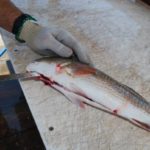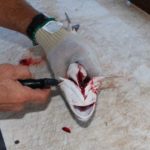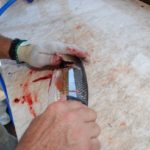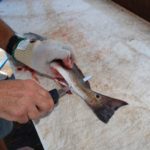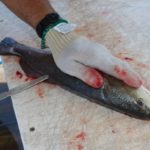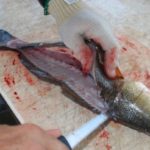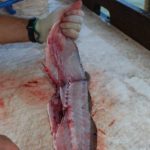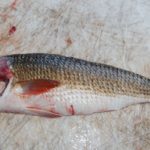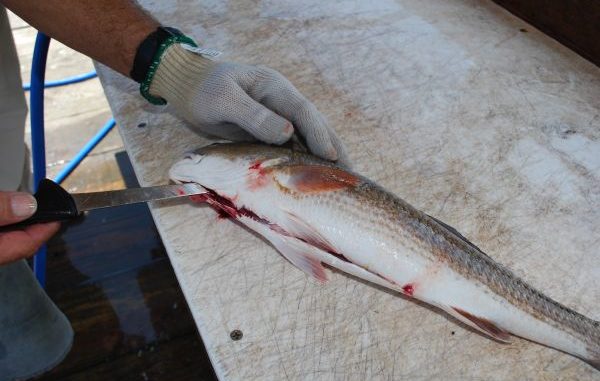
Redfish and black drum are substantially more difficult to clean than are speckled trout. The heavy bone structure and larger scales make knife control more difficult, often resulting in leaving large amounts of flesh on the carcass.
Fish-cleaning expert Ricky Richoux takes advantage of any opening, or chink, in the armor of the fish, when cleaning them. One opening is the anal vent. A soft spot on the fish is the small groove that closely parallels the dorsal (back) fin.
“All fish have that,” he says, “and I use it a lot.”
He also avoids cutting bone, such as rib cage, wherever possible. Once the flesh of the fillet has been removed from the carcass, he rips the fillet loose, breaking the bones surprisingly neatly. Once in a while, the rib bones will not break when the fillet is pulled. Any that must be cut are sliced with a Dexter Russell Tiger Edge blade.
The procedure produces a skin-and-scales-on fillet for cooking “on the half-shell.” It leaves in place the “throat” of the fish, on the lower front of the fillet, which Richoux especially prizes.
If a skinless fillet is desired, hold the tail tip of the fillet, skin side down to the cutting surface, and with the other hand cut-scrape the flesh loose from the skin. After the fillet is removed, it should be trimmed of any red flesh found on its skin side. The larger the fish is, the more important trimming becomes.
Besides the occasional use of the serrated blade on the rib cage, all cuts are made with the F. Dick Stiff blade, unless the fillet is skinned. Skinning and trimming of the red-fleshed blood line is done with the Flex blade.
